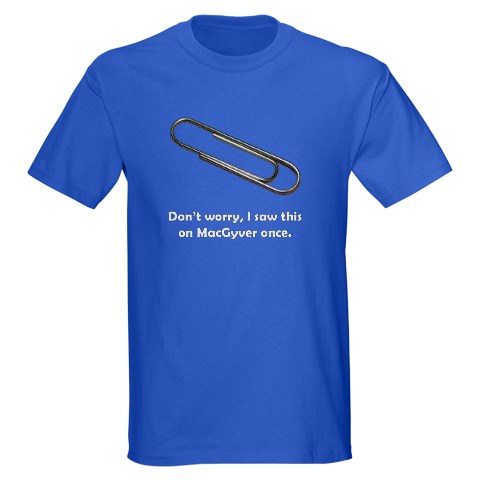I think this qualifies as a heads up. I suppose I ought to throw in all the embarrassing details.
The machine is an iR3570.
It started out with voids crossfeed, intermittently. After a little examination I picked out a pattern crossfeed re-occurring at 40mm, and a pattern of white dots at 75.5mm. On the first visit I identified cracked developer spacers. It seemed like a good place to start.
Second visit:
The developer spacers installed easily enough, but did not solve the problem. What started as intermittent voids soon became a mixture of black lines and voids, all crossfeed. Within 10 copies the image went solid black ... not solid black ... like 90% fill with the faint image of the original just visible. No voids. After a quick consultation with a Canon guy I know from way back, he suggested a problem with the laser shutter cable. I didn't know there was a cable up until then. The cable was working properly, but that led me to the laser unit.
Third visit:
I installed what was purported to be a good used laser unit. It did not solve the original quality issue, and the mirror motor did not sound too healthy. Within 30 copies it was pulling E000100-01. At least for the purposes of diagnosis I could now rule out the laser. On an inspiration I checked the drum ground inside the drum core. Infinite resistance between the copper contact and the aluminum core. It was blackened, like there had been arcing.
With some careful tapping I removed the rear drum cap. The ears that contact the drum were burned off. A strategically shaped paper clip made a fine drum ground. When assembled it measured 0.002 ohms from the drum core to the machine frame, and voila! Fixed.
I've installed a lot of Canon drums over the years, and have never seen this particular thing. The drum was OEM, and only had 6K since it was installed. The picture below is of an intact drum ground to give you an idea what it's supposed to look like:
Drum Ground.JPG
Have you ever seen this? =^..^=
The machine is an iR3570.
It started out with voids crossfeed, intermittently. After a little examination I picked out a pattern crossfeed re-occurring at 40mm, and a pattern of white dots at 75.5mm. On the first visit I identified cracked developer spacers. It seemed like a good place to start.
Second visit:
The developer spacers installed easily enough, but did not solve the problem. What started as intermittent voids soon became a mixture of black lines and voids, all crossfeed. Within 10 copies the image went solid black ... not solid black ... like 90% fill with the faint image of the original just visible. No voids. After a quick consultation with a Canon guy I know from way back, he suggested a problem with the laser shutter cable. I didn't know there was a cable up until then. The cable was working properly, but that led me to the laser unit.
Third visit:
I installed what was purported to be a good used laser unit. It did not solve the original quality issue, and the mirror motor did not sound too healthy. Within 30 copies it was pulling E000100-01. At least for the purposes of diagnosis I could now rule out the laser. On an inspiration I checked the drum ground inside the drum core. Infinite resistance between the copper contact and the aluminum core. It was blackened, like there had been arcing.
With some careful tapping I removed the rear drum cap. The ears that contact the drum were burned off. A strategically shaped paper clip made a fine drum ground. When assembled it measured 0.002 ohms from the drum core to the machine frame, and voila! Fixed.
I've installed a lot of Canon drums over the years, and have never seen this particular thing. The drum was OEM, and only had 6K since it was installed. The picture below is of an intact drum ground to give you an idea what it's supposed to look like:
Drum Ground.JPG
Have you ever seen this? =^..^=


Comment